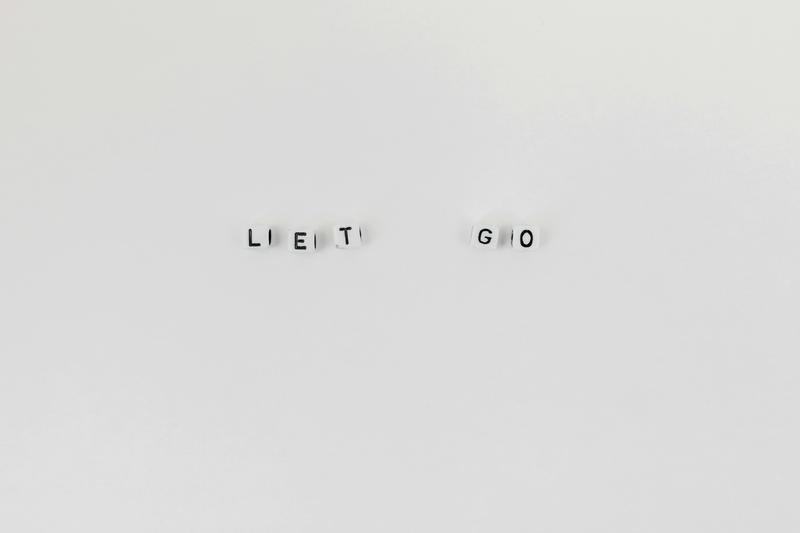The Problem Isn’t Attachment. It’s What You’re Reinforcing

You’ve probably been told that letting go is the answer. That freedom comes from detachment. But what if the very act of trying to “let go” is what’s keeping you stuck?
This post is for anyone who’s tried to loosen their grip—on a relationship, a goal, a version of themselves—and still felt reactive, anxious, or uncertain underneath. You’re not doing it wrong. Most approaches to “letting go” are still rooted in fear. And that fear becomes the thing we’re actually practicing, over and over again.
Instead of focusing on release, what if we focused on training stability? Let’s explore what’s really happening in your system when you’re attached to something—and how you can build an inner foundation that doesn’t rely on detachment at all.
Letting Go Is Often a Reaction to Fear
When people say “let go,” what they often mean is: detach before it hurts. It’s a survival move. The nervous system perceives risk—loss, rejection, disappointment—and reacts by trying to remove the object of attachment.
It might sound wise or spiritual. But what’s really being trained here is avoidance. Withdrawal. Fear disguised as control.
I’ve seen this in so many people I work with. Someone starts dating, things feel good, and instead of relaxing into the connection, they pull back. They tell themselves, “I’m just not attached.” But underneath that story is a spike of fear—what if it goes away?
They’re not training peace. They’re training anticipation of loss. And the nervous system responds accordingly.
Attachment Isn’t the Problem—It’s a Signal
Attachment gets a bad rap, but it’s not a flaw. It’s a signal. It tells you what emotional state is currently running the show.
If you find yourself clinging to something—a person, a role, a version of success—it usually points to an underlying fear: fear of not being enough, fear of being alone, fear of losing control.
The goal isn’t to “fix” the attachment. The more helpful question is: What state is this reinforcing? And is that a state I want to live from?
One client of mine had built an incredibly successful career. But every time a project ended, they’d spiral—not because they lacked skill, but because their system had been trained to tie worth to output. It wasn’t the job they were attached to. It was the identity it gave them.
When strong attachment shows up, it’s a doorway into your inner training. Walk through it.
Emotional Intensity Trains Patterns—Not Logic
This part is crucial: your system doesn’t get trained by what you know. It gets trained by what you feel repeatedly—especially under intensity.
So if you’re in an anxious or reactive state and you respond by pulling away, that emotional loop gets reinforced, not dissolved. The body learns: “I’m not safe unless I withdraw.”
You might believe you’re moving on or letting go. But what you’re actually practicing is a nervous system that runs from emotional heat.
This is why insight isn’t enough. Lasting change begins when you feel the old emotional pattern rising, and you consciously choose to redirect—to feel differently, to respond differently, even if it doesn’t come naturally at first.
What You’re Really After Is Certainty
People say they want freedom, peace, or detachment. But those aren’t the actual drivers. They’re outcomes—byproducts of something deeper.
What you really want is certainty: the inner stability to stay grounded no matter what life throws at you. Certainty doesn’t mean you never feel sadness, disappointment, or longing. It means those emotions don’t control your behavior.
Imagine being in love and still feeling calm. Wanting something deeply but staying grounded. That’s certainty. And that’s what you train—not through detachment, but through choosing who you want to be, over and over again.
In high-stakes situations—business decisions, family dynamics, health crises—I’ve seen people stay clear and steady, not because they let go, but because they had trained themselves to remain centered under pressure.
Redirection Is Where Transformation Happens
Most people either react impulsively or suppress their emotions when discomfort hits. But neither of those changes the underlying pattern.
Here’s what works: Pause. Notice. Redirect.
When the emotion arises—jealousy, fear, anxiety—take a breath. Acknowledge the pattern. Then consciously bring in the emotional state you want to train. Maybe it’s trust. Maybe it’s certainty. Maybe it’s calm presence.
Doing this doesn’t mean the emotion disappears immediately. It means you’re teaching your system how to respond differently. You’re wiring in a new default.
Letting Go Becomes Possible—When It’s No Longer Needed
Here’s the paradox: when you’ve trained your system into calm, grounded presence, you don’t need to “let go.”
You’re not holding on in the first place. You’re not bracing for loss. You’re not gripping in fear.
From that state, you’re fully engaged—open, connected, and stable. You can love deeply, take bold risks, and stay available, all without being ruled by emotional volatility.
So the freedom you think detachment will give you? It only arrives when you no longer need detachment to feel free.
Letting go isn’t the goal. Emotional stability is.
What Are You Practicing Right Now?
Every emotional state you feel regularly—especially under stress—is being trained into your system. And your nervous system doesn’t judge whether that state is helpful or harmful. It just learns by repetition.
So ask yourself honestly: What emotional state am I rehearsing day after day?
Fear? Distrust? Jealousy? Or is it stability, calm, certainty?
Because what you practice is what you become. Not just in a single moment—but in how you show up in relationships, in your goals, in the quality of your everyday experience.
This isn’t about fixing yourself. It’s about choosing what you want to train.
Ready to Train Something Different?
If you’re ready to stop managing symptoms and start building an inner state that can hold steady through it all, I’ve built a system for that. It integrates perception, emotion, and nervous system training—so you don’t just understand your patterns…you actually shift them.
Click here to explore the full training system.
And for weekly tools, reminders, and reflections, follow along on Instagram: @mikewangcoaching.
You can also join the newsletter here for deeper dives and guided practices delivered straight to your inbox.

